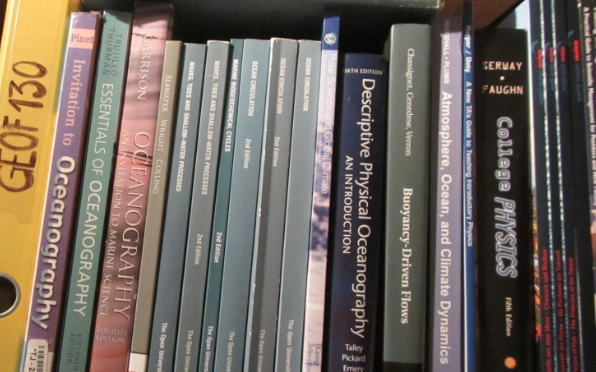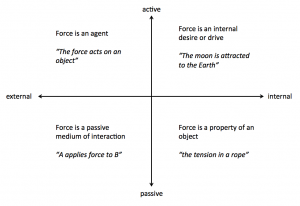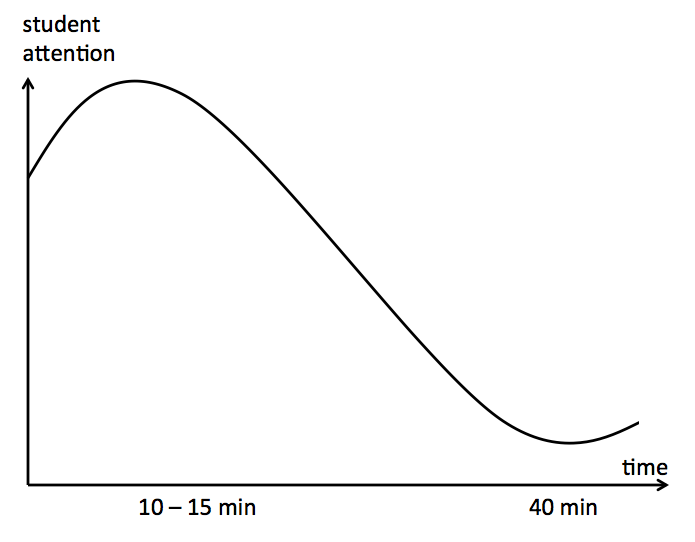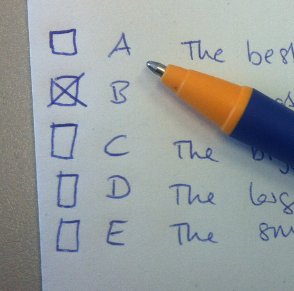A very brief history of learning theories.
Discussing a paper on learning theories with a friend last week, I realized how far I have come from when I first started reading those papers. Then I felt like most of those papers were a lot of hot air, a lot of waffling around, completely disconnected from the real world. Especially when looking at the diagrams for some of the theories, I just never got what all the fuss was about. So now I am hoping to explain one theory in a way that is understandable – and maybe even interesting. Give me a shout if things are unclear and I’ll try to do better!
One of the classic papers in education is Kolb’s (1984) “Experiential learning: experience as the source of learning and development”, where a theory of the process of learning is presented. Kolb bases his theory of learning on earlier theories of Lewin, Dewey and Piaget, and rereading his paper recently put things into a new perspective for me.
Lewin imagines learning as a cyclic process, where he emphasizes the here-and-now concrete experience to test abstract concepts. Learning, as a feedback process, starts from a concrete experience, which leads to observation and reflection. From that, abstract concepts are formed to explain the new situation. Those concepts and their implications are then tested in even more new situations, leading to new concrete experiences, and the cycle is hence repeated over and over again. So far so good.
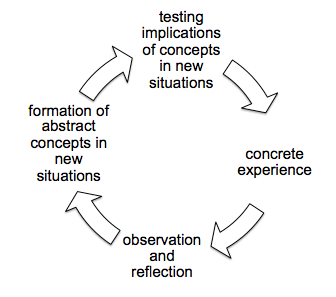
My adaptation of Lewin’s learning cycle
A similar feedback process is described in Dewey’s work, where a purpose is formed through a cycling through similar stages: An initial impulse (I1) is carried out, and its effect on the surrounding conditions is observed (O1). Together with knowledge (K1) of what has happened in similar situations in the past, as well as through information, advice and warnings from others, a judgement (J1) is created, which leads to a modified impulse (I2). This would be where Lewin starts the second round around his circle, but to visualize that the two impulses are different, Dewey does not close the circle, but rather forms a spiral. Still the process is repeated until several cycles later a purpose is formed. The purpose differs from the initial impulse: “mature purpose develops from blind impulse” through modification by observation, knowledge and judgment.
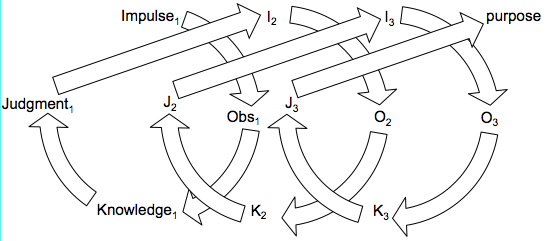
My adaptation of Dewey’s learning spiral
Piaget then describes the learning process as a cycle of interactions between an individual and its environment. He links different steps in the cycle to steps in child development. For me, his main message on the topic is the interaction between the accommodation of concepts or schemas to experiences, and the assimilation of events or experiences into existing theories. He describes two extremes: One, where accommodation is a lot stronger than assimilation, where actions of the individual are determined completely by the environmental constraints. Or the other, where assimilation is a lot stronger than accommodation, where the individual lives in a dream world and sticks to their concept without being influenced by the environmental realities.
On the basis of this, Kolb developed his learning cycle. According to Kolb, there are four different skills an effective learner needs to master, all pretty much similar to the earlier theories described above:
- Concrete experience: learners must be able to enter into new situations openly and without bias in order to experience them fully.
- Reflective observations: the learners must be able to reflect on their new experiences from different perspectives.
- Abstract conceptualization: from the observations, the learner must be able to form logically sound concepts and theories.
- Active experimentation: the learner must be able to use those theories to make decisions and to solve problems.
Learning thus requires abilities that are polar opposites of each other: A learner must act and reflect on a given topic, as well as bring together concrete experience and theoretical reflections.
This is shown in the orthogonal axes in the classical picture of Kolb’s learning cycle:
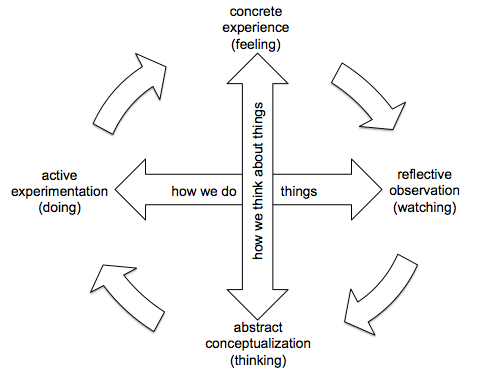
My interpretation of Kolb’s learning cycle (1984)
Contrary to my first interpretation of that image, the axes don’t span up the polar opposites of different learner types, but each endpoint is a necessary part of the learning process. For successful learning, we need to create situations in which all four of those processes can occur.
This is especially relevant for me (and readers of this blog) who like to include hands-on activities in their teaching. While I think hands-on activities are great, I implicitly understand them to include more than just the hands-on parts – namely reflection, conceptualization and transfer (which happen to be the other steps in Kolb’s learning cycle!). But in my opinion, this needs to be made explicit more, for two reasons: Firstly, so that both instructors and students are aware that those are necessary steps in the learning process. And secondly, so that the old “oh, so you are just playing – in my classes students learn the hard way!” can stop. Using hands-on activities is activating an additional channel (and we’ve talked about the importance of peer discussion before and after running experiments), but by no means is that the only channel we should be using, or are using right now.
